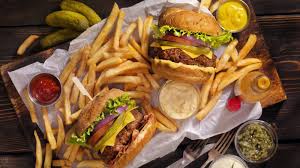The obesity pandemic has been emerged as one of the biggest pressing public health crises in the United States (US) since 1976 and still going on these days, along with increasing rates of chronic diseases such as diabetes, heart diseases, and certain cancers. Furthermore, nowadays, consumers not only have to face the rise of healthcare costs, but they also have to worry about the widespread modern advertisement of unhealthy and high fatty acid foods such as snacks or fast foods that are not expensive, and easy access to. Traditional strategies such as calorie labeling and zoning restrictions, while beneficial, yet cannot restrain the rise of the pandemic. Thus, this executive summary outline will propose my regulatory suggestions that will also address food access, consumer behavior, and industry practices allowing the United States to create a sustainable pathway to lower its obesity rate.
While we all recognize that advertising and advocating for a healthy lifestyle is extremely important, and it happens quite often especially thanks to social media nowadays. But, while a healthy lifestyle can lower the risk of cardiovascular disease (CVD), it has its limitations. Research estimates that even with optimal habits, the reduction in lifetime CVD risk may be limited to just 5% to 15%. Plus, the term “healthy lifestyle” is sometimes confusing, besides the fact that it means having a better lifestyle such as balancing, physical activities, and sleep schedules, it also means balancing your intake. The tricky part of this is how do we adequacy our diet? Over the past century, Americans have been bombarded with huge dietary advice such as social media, TV shows, books, articles, and newspapers, and they frequently choose to listen to it even though they can easily access sustainable tools that are well-prepared by the government such as food guides (DRIs, etc.). For instance, according to Norman J. Temple, even though we have many tools to improve health, only 21.5% of American people eat at least one serving of fruit a day.
Furthermore. in my belief, the US technically doesn’t have restriction in food advertising. According to the Ofcom, United Kingdom (UK); a daily frequently regulator use for the communication service that in 2007, thanks to the restriction, it reduced 37% of children’s exposure to high in fat, sugar, and salt (HFSS) products advertising. This might not be a big number but it does contribute in decreasing the obesity rate. Plus, I also believe that currently in the US, we do have unnecessarily amount of delivery systems that also potentially contribute in raising the overall obesity rate.
In the end, I think we should carry out a wide range of all required actions simultaneously in order to tackle the obesity epidemic. In addition to keeping customers from mistaking our primary goal, this would improve our chances of bringing the rate down from where it is currently.

